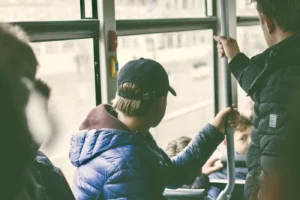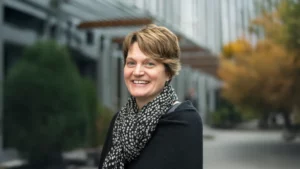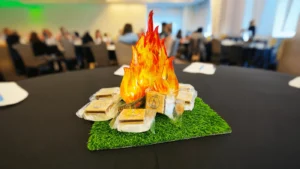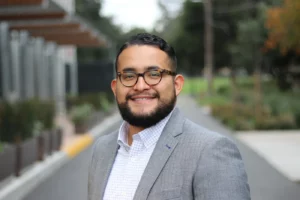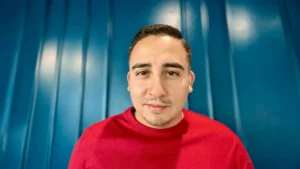In this series, we share the human stories of special education leaders who are partners of Goalbook. This story features Kay Seale, the Chief of Specialized Services at Boston Public Schools.
“My story begins with the fact that I am an immigrant.”
Kay Seale’s journey in education didn’t begin smoothly. She was six years old when she moved from Barbados to the United States. The transition process was difficult because she had to acclimate to a new home and a new school.
Kay’s first point of entry for education in the United States was in Boston Public Schools (BPS), which was a huge learning experience for her. During her 6th and 7th grade school years, BPS was being desegregated. This was “a very traumatic experience for me,” recalled Kay.
“I was a black child living in Roxbury, being bused to West Roxbury. I didn’t know that we weren’t welcome. There was this fear because there was a lot of hostility from the community, who wanted us to go back to where we ‘belonged.’”
The little girl with pigtails, ribbons, and a Caribbean accent was not well received by her peers. She did not feel like she was part of the school community she was being bused to. “We were something that was done TO them,” Kay said.
Her parents trusted the school district to do what was best for their children. But Kay had no choice in where she went to school. She struggled to keep up because the learning at the school in West Roxbury was much more rigorous, because they had access to better curriculum materials, and teachers taught using different methodologies.
Although the desegregation of Boston Public Schools was a traumatic childhood experience for Kay, she carries the memories and lessons with her as she’s continued in her career as an educator and now as the Chief of Specialized Services at Boston Public Schools. The experience taught her how critical it is for children to feel safe and have a sense of belonging.
“Sometimes our children have so many challenges and difficulties because they don’t have a sense of belonging to their school environment. They don’t feel as if they can thrive and learn. Their identity is questioned,” she said. “If we truly, truly want to prepare them for the future, it’s important to take into consideration how children are part of our learning and part of the fabric of schools.”
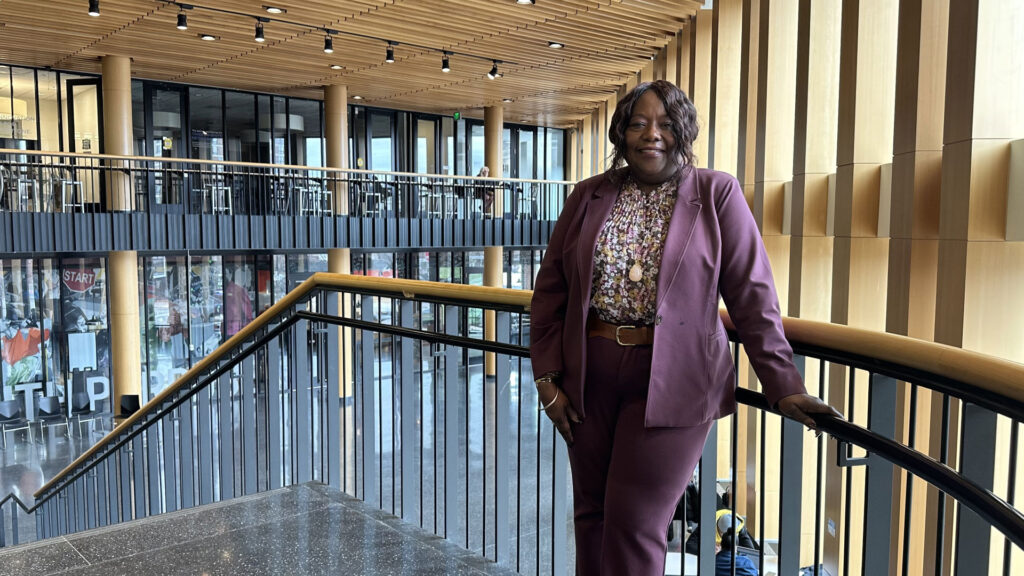
A Full Circle of Change
Kay always knew, deep down, that she wanted to be an educator. She loves reading and teaching others. Growing up, she would rally her cousins and family members, pretending to be their teacher. She used the family’s garage door as her chalkboard, writing lessons for her “students.”
Kay attended Boston University and became the first in her family to graduate with a college degree. She began her professional career at Boston Public Schools in early childhood education and then moved to teaching elementary school. She shifted to working at the district office as a team facilitator for schools. However, Kay soon realized she wanted to be in a school-based position where she could get a better understanding of other facets of a district.
This led to her role as a Program Advisor for Compliance. Kay and a team of administrators, educators, and specialists created reports about what was happening across all BPS schools in preparation for meetings with Judge Garrity, the very man who had ordered and overseen the desegregation plan for BPS.
“It was surreal and mind-blowing that I was now sitting at the table with the judge who mandated that I had to be bused to another school,” reflected Kay.
This caused Kay to feel a real sense of purpose in her work and to see meaning in the difficult childhood experiences she had in BPS.
Ten years of working in BPS created the pathway for her work in other large districts in Massachusetts. She worked in Brockton Public Schools for 15 years and then moved to Worcester Public Schools. Kay was committed to Worcester and confident in the changes made in the district as a result of her leadership and the great work they were doing there.
“It’s so important to have experiences where you can learn how to do the work, so that you can support your staff that are in the trenches, taking the initiative, and doing the work,” Kay said.
“I’ve been blessed to make accomplishments in areas that I felt were important. But as I looked at my career and next steps, I felt like there were still things I needed to do and accomplish.” So after ten years in Worcester, she made another career move.
Kay did a 360 and came back to where she started her journey in education as a little girl: Boston Public Schools, but this time as the Chief of Specialized Services. For her, coming back home to BPS is “the best way to bring things into a full circle of change.”
The Moral Imperative to Create Opportunities for All
Since her return to BPS in August 2023, Kay has begun to develop a more comprehensive understanding of the disparities and inequities that have existed within BPS.
A 2022 comprehensive analysis by the Council of the Great City Schools of BPS concluded there were significant inequities in outcomes for students of all races across the district, which was a huge concern. Data also showed the disparities of placement for special education students in substantially separate classrooms were prevalent, especially for Black, brown, and Latinx males.
As a result of the comprehensive analysis, BPS created an Inclusive Education Plan, which is “a roadmap to build an immersive, multicultural environment, fostering connection over exclusion for students.”
Kay’s current work is to support the Inclusive Education Plan by creating opportunities for children and families by breaking down barriers that prevent students from feeling like they belong. This is what Kay felt called to do, and why she returned to BPS in the Office of Specialized Services.
“It is a moral imperative to create opportunities that provide access to all,” she said.
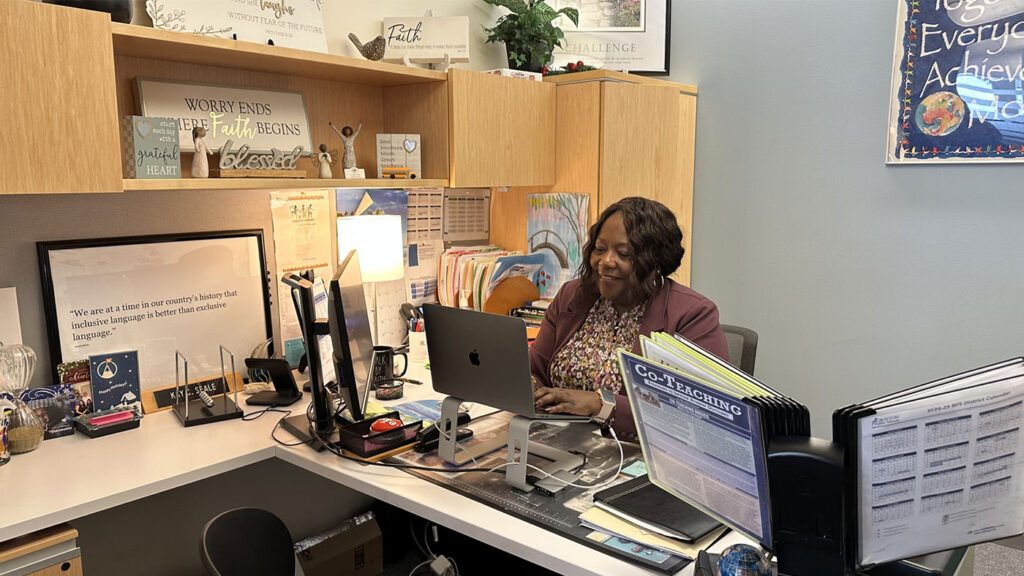
Leading Others By Serving Others
Kay has “street cred” because she grew up in BPS.
But she’s also earned her credibility because she’s an expert and professional who’s had multiple leadership roles in special education.
“When I make decisions,” she said, “I make them based on all my professional experiences, but also based on my battle scars, which make me human.”
The memories and feelings of not belonging at a school allow Kay to bring compassion and empathy for families in her current role.
Kay is a servant-leader and makes herself accessible to her staff, the families, and the students. What this looks like in practice is:
- Being visible and present in schools, not solely working in the central office building
- Developing relationships in the community and with special education organizations
- Building trust with families through clear communication
She treats all staff—from the secretarial staff to the professional staff—with respect and integrity. According to Kay, if you want to build your staff’s capacity, it starts with engaging them in the conversation and walking them through the process so there are no surprises or misunderstandings.
She wants people to feel empowered rather than like things are being done TO them, as she felt when she was bused to a different school as a little girl.
Kay is transparent in her decision-making and communication. She keeps folks informed through monthly meetings with team instructors, clerical and professional staff, and school-based staff. She also does this to give them a voice.
“Voice is so important to this work,” Kay said “But so is setting boundaries, clear expectations, and communicating decision-making processes and the impacts decisions may have.”
On the wall of her office hangs a framed poster she’s carried with her for nearly every role over the past 30 of her 40 years in the field. It reads: Together Everyone Achieves More.
“And that’s my mantra,” said Kay. “I try to be reflective and mindful of where I start, to be present for our families, and also to be aware of what I can do to make things better for our students.”
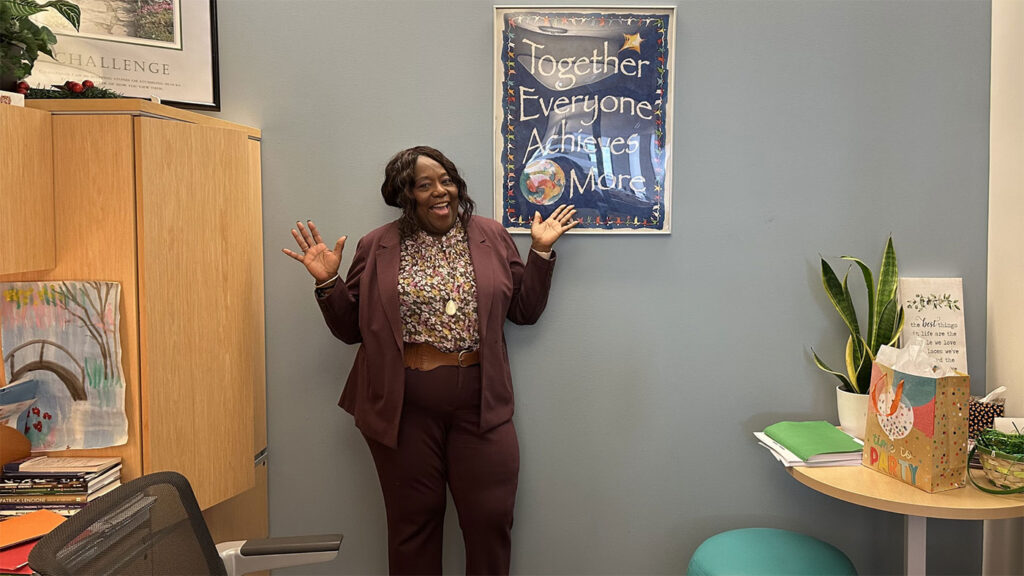
Looking to the Future
According to Kay, special education leaders must be reflective and admit that they don’t have all the answers. That is why they need to work with people who are willing to grow and learn with them, because when they stop growing and learning as educators, they stop thriving. They stop making a difference.
“We must all partner together to make sure that students can strive to be the best they can be, and that we give them the resources, the love, and the passion to embrace who they are.”
Special education leaders “have so many things that are going on all at once. We’re constantly pulling from different areas to get things done right,” said Kay. “But we need to focus on one thing.”
For Kay, that one thing is providing the best educational learning opportunities for all students so they can be independent, life-long learners with a civic understanding who are vigilant in their community and society.
When asked what she sees as the future of education in the United States, Kay replied: “It is imperative that we amplify student voice and that we understand that our work is really to embrace who our students are and prepare them for the future.”
Perhaps if an adult had welcomed Kay and made her feel like she belonged at school, she wouldn’t have the battle scars from the trauma of being bused during the desegregation of Boston Public Schools.
But without those scars, Kay wouldn’t have the empathy she does for students and families that comes from a similar experience. She’s able to look back and not only make meaning of past hurts, but she’s also found a sense of purpose in them.



